5 Things You Need To Know about Condenser Microphones: A Brilliant History
Condenser microphones are the go-to choice in recording studios and on stages due to their remarkable sensitivity and precision when transforming sound into electrical signals. In addition, these mics provide reliable accuracy for broadcasting, live sets, and more – making them invaluable for all who need quality audio recordings!
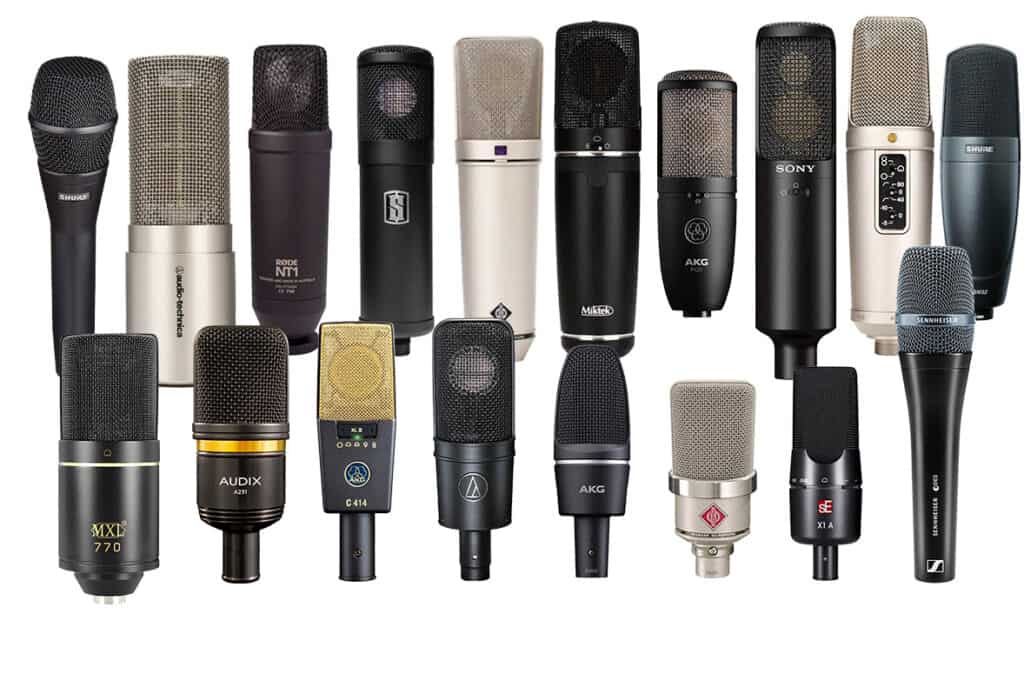
History
Mentioning microphones in a recording studio evokes the classics – U47, U67, ELA M 251, C12, and so on. These timeless models remain cornerstones of today’s recording industry and have inspired most modern mics produced nowadays.
Despite the high cost, all these mics share one significant trait: they are condenser microphones. Of course, various other mic varieties have made their mark in history as well; however, there is something extraordinary about condensers.
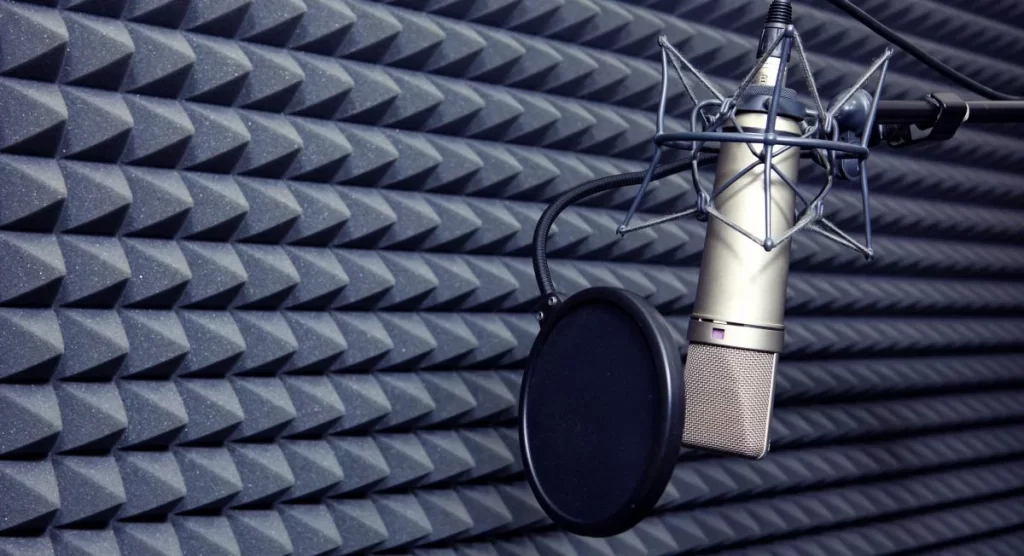
First Things First
As we delve into condenser microphones, let us take a moment to pay homage to those who created some of the earliest models. The history may be hazy in places, but here are the fundamentals.
Alexander Graham Bell had his revolutionary design patented back in 1876. His subsequent invention included a liquid transmitter, and Emile Berliner developed this further by adding a steel ball that touched a stretched metal diaphragm the following year. Consequently, he improved the structure, including a liquid transmitter, receiver, and wire.
In 1878, David Edward Hughes made a revolutionary breakthrough in the telephone industry – he invented and termed the very first microphone. Consisting of a carbon rod suspended between several metal electrodes, his creation would revolutionize communication for generations.
The Creation of Condensers
As the telephone’s prevalence grew, so did people’s desire for enhanced sound transmissions. Consequently, the history of microphones became intertwined with that of telephones.
In 1916, E.C. Wente created the first condenser microphone while working at Bell Labs. His patent was technically for a “telephone transmitter,” but the design resembles what we now know as a condenser microphone.
How do condenser microphones work?
To simplify, a condenser microphone comprises two distinct pieces – the capsule and the preamp. The tablet features an easily movable diaphragm sandwiched between a metal plate and a thin electrically conductive membrane. When someone speaks or sings into it, sound waves cause this diaphragm to move, thus producing an electrical signal amplified by the preamp for better clarity! You have transformed your words into sweet sonic audio beauty in just moments!
Condenser Microphone Boom
George Neumann’s remarkable contribution to the modern condenser microphone is still seen in today’s designs, beginning with his iconic CMV3, released in 1928. Featuring a revolutionary bottle style that set it apart from any other microphones of its time, this groundbreaking design continues to influence and inspire current models.
Way before Neumann turned heads with their condenser microphone, Shure had already begun creating theirs. In 1932, the brand launched Model 42, and three years later, in 1935, they released a trio of mics from the 43 series – sporting an increasingly popular streamlined design.
In the late 1940s, Neumann released their renowned U47 vocal microphone. It boasted a warm tube sound courtesy of its Telefunken VF14 and M7 capsule, allowing cardioid and omnidirectional recording modes. Since then, this iconic tool has been used to capture everyone who was anyone, solidifying it as one of the most legendary microphones ever made!
Telefunken’s tubes and components significantly contributed to the distinct sound of early microphones. This can cause some confusion, as some vintage pieces bear the Neumann badge while others show off Telefunken’s logo. Not only did they supply parts to Neumann, but they also distributed their products globally, each containing Telefunken branding!
Telefunken’s discontinuation of the VF14 tube used for the U47 was a significant catalyst for Neumann to craft their next game-changing invention, the remarkable large diaphragm condenser microphone – The U67. This timeless piece features an exquisite two-piece backplate, elegant tapered body, and diverse figure 8 polar pattern. With its immense success through generations, it is no surprise why this innovative breakthrough has become one of Neumann’s most iconic mics yet!
During the 1950s, AKG created its reputation in the audio industry by launching renowned industrial microphones. Their iconic C12 microphone debuted in 1953 and persisted for almost a decade. This slender mic featured their highly sought-after CK12 capsule and an external box that enabled remote control of polar patterns.
Introducing Phantom Power and FET Technology To Condensers
As the genuine dispute over tube versus FET continues even today, during the 1960s, microphone makers struggled to fulfill the soaring demand for a heightened level of sound quality.
In 1964, Schoeps made history by introducing the world’s first phantom-powered microphone: The CMT 20. This groundbreaking device was powered with only 8.5 volts. In addition, it boasted a transformerless, balanced output stage that set it apart from other microphones of its time – long before FET technology became popularized. In later years, they followed up this success with their successor model – the CMT 200 – which featured an advanced direct-coupled output system for improved sound quality.
In 1967, Neumann launched their first FET microphone – the U87. This model was based on a similar design as the U67 and featured 48v phantom power. Needing battery operation? They had you covered, too, with their double-battery powered U87i (not to be confused with its modern counterpart, the AI). It’s no surprise that this stellar mic became an instant classic for decades afterward; even today, it is still one of Neumann’s most successful microphones!
Condenser Microphones Of The Modern Era
With time, it’s clear that current microphone designs follow two lines of thought. On the one hand, there is a desire to combine classic sounds with cutting-edge technology. But conversely, others are looking for ways to reproduce vintage condenser microphones at an affordable price point.
If you are looking for something to recreate classic mics, there are many options. You can easily find an inexpensive U67 clone if that’s what you desire; however, if you’re searching for something more creative, Townsend Labs is doing some extraordinary work with its modeling microphones. These allow the user to record via a neutral microphone and preamp while still being able to switch between exact vintage and contemporary models.
The Impact Of Condenser Microphones
Without a doubt, the recording industry would be significantly altered without condenser microphones. These ageless treasures and modern marvels are indispensable for tracking vocals, guitars, drums, brass instruments – and much more.
As we eagerly anticipate what the future brings for condensers, it is exciting to witness their evolution and influence on our lives.
What is Their Primary Application
Condenser microphones are highly sought after due to their immense sensitivity, which allows them to capture even the faintest audio and reproduce it in astonishing detail. To demonstrate this capability, let’s take a grand piano as an example; when a condenser microphone is placed nearby, every single note will be precisely picked up – including its harmonics and overtones that other sorts of mics may miss!
Despite this impressive sensitivity, condenser microphones do have their drawbacks. They are more prone to background noise, handling noise, and room reverberations which can impact the sound quality of your recordings. Thankfully many come with in-built shock mounts, pop filters, and windscreens that help reduce handling noises while minimizing echoes from your surrounding environment for a richer audio experience.
Condenser microphones are a go-to choice for audio professionals due to their impressive sensitivity and pristine sound quality. In addition, their range of frequencies allows them to capture any sound in great detail, making it perfect for everything from recording studios to live performances. With so many beneficial traits comes its wide use across several essential areas:
- In music production, condenser microphones are necessary when recording vocals and instruments. By providing optimum sound detail and accuracy, producers can accurately capture even the most subtle aspects of their audio source. Additionally, multiple condenser microphones in various positions around an instrument or vocalist create a multi-microphone setup that dramatically improves overall sonic depth and clarity.
- Broadcasting: Condenser microphones are the go-to choice for on-location interviews and live broadcasts, as they deliver superior audio clarity compared to other microphone types. Their high sensitivity and directionality ensure that voices are captured in detail with minimal background noise, essential in various production scenarios where a clear sound is required.
- Podcasting is an art, and condenser microphones can play a crucial role in providing your audience with clarity when delivering the highest quality content. Thanks to their extraordinary sensitivity and comprehensive range frequency response, these mics will pick up on subtle nuances that add depth to your speech – making for an even more engaging podcast experience!
- Voice-over artists rely on condenser microphones to bring their performances to life with clarity and finesse. They provide a high level of detail that allows for precise delivery, ensuring that the intended emotion shines through in every film, television show, or video production scene.
- For recording instruments, condenser microphones have become the go-to choice for producers. Their incredible sensitivity and precision make them perfect for capturing an instrument’s intricacies – acoustic guitars, drums, or wind instruments. With a condenser mic at your disposal, you can ensure that every note is captured with crystal clear clarity and detail.
Difference Between Expensive and Entry-Level Mics
The audio community has been arguing for quite a while regarding the effectiveness of high-end, multi-thousand dollar condenser microphones compared to more economical $100 models. Supporters of high-end condenser microphones proclaim that they provide superior sound quality, accuracy, and versatility than other budget options. Those who oppose this perspective contend that the differences in sound between expensive and affordable mic systems are often exaggerated. In addition, many cheaper mics can still deliver remarkable audio recordings when utilized correctly.
High-end condenser microphones offer incomparable sound quality and precision, boasting a broader range of frequencies and an even frequency response. Furthermore, such mics generally feature superior signal-to-noise ratios that limit background noise and provide a higher clarity. For those searching for the ultimate audio experience, high-end condenser microphones are essential!
Nevertheless, counterarguments suggest that the sonic distinctions between pricey and budget-friendly condenser microphones are often negligible. Consequently, many more cost-effective options can record audio with exemplary clarity.
Proponents of budget microphones contend that much of the dissimilarity in sound quality between these and top-of-the-line models can be attributed to factors like room acoustics, recording technique, and other equipment used. Moreover, on a tight budget, condenser mics may offer more versatility than high-end choices, which tend to be more complicated and require specialized knowledge for effective operation.
People frequently ponder over the sound quality difference between a $10,000 condenser microphone and one costing only $150. The answer could be more straightforward; yes, expensive audio equipment may provide more accuracy in terms of sound quality, yet the gap might be less noticeable than expected. So before investing heavily into pricey gear for your recordings, consider whether it’s worth the decision!
A $150 condenser microphone can yield excellent sound quality if used in a well-treated space and with professional recording equipment. Conversely, an expensive $10,000 microphone will only produce the desired results if employed in a poorly treated room or by substandard recording devices.

Polar Patterns
Condenser microphones are uniquely able to pick up sound from different directions, known as polar patterns. Therefore, it will respond differently depending on where the source of sound is located relative to the microphone. There are multiple kinds of these directional sensitivities, each with its capabilities and uses.
- Omnidirectional microphones are a must-have for any live recording session. Not only do they provide an expansive 360° sound capture, but their ability to amplify the sound coming from any direction is unparalleled. For field recordings or sessions involving multiple audio sources that may come from all angles, these mics ensure nothing will be missed in the mix! They also allow you to bring in atmospheric and other ambient noises unique to each environment during your recording process.
- Cardioid microphones are highly useful for vocal recording situations, as their directional design captures sound from the front of the microphone and rejects anything coming from the sides or rear. This allows you to isolate a specific audio source while filtering out unwanted background noise, resulting in clear recordings with detailed signal quality.
- Figure-Eight microphones are the perfect go-to solution if you want to record two sound sources on opposite sides of the mic. These directional mics capture audio from both the front and back and reject noise from their sides, resulting in better recording quality! Figure-Eight mics have found great success in many live scenarios where capturing audio from different directions is necessary.
- Supercardioid microphones are designed to capture sound from the front while rejecting any noise coming from behind or beside them. With a more directional pick-up pattern than cardioid mics, these microphones provide exceptional clarity and precision when recording noisy situations. Whether you’re live streaming an event or simply trying to filter out ambient sound, supercardioids offer superior acoustic separation for capturing crystal-clear audio every time!
- Hypercardioid mics are the perfect choice when you need a highly directional sound to pick up a pattern. They effectively capture sounds from the front of the microphone while canceling out any noise from behind or to its side – making them ideal for live recordings with high levels of background chatter, such as concerts and sports events. So if you’re looking to isolate a specific sound source without disturbance, Hypercardiod microphones can do just that!
All in all, it’s essential to consider the polar pattern of a condenser microphone when selecting one for your specific task. Every type has its quirks and uses, and you’ll need to gauge which is best suited based on your individual needs and recording setting. From vocals to live performances or ambient sound recordings – picking an appropriate polar pattern will enable you to document audio of superior quality!
Frequency Response and SPL
Frequency response offers a clear illustration of the scope of frequencies that can be detected and replicated by microphones. Human hearing ranges from 20 Hz to 20,000 Hz, with microphones exhibiting flat frequency response capable of equitably picking up these broad spectrum sounds.
However, many microphones feature a frequency response tailored to specific applications. If you’re looking for clear vocal recordings, for example, then opt for one that has an emphasis on mid-range frequencies. Whereas if it’s drum recording you after, look out for those with flat responses but slight boosts in the low-end spectrum to capture each strike accurately and authentically.
An essential measurement for any microphone is its Sound Pressure Level (SPL), expressed in decibels (dB). The SPL rating indicates how much loudness a mic can endure without warping the sound. This attribute can be particularly beneficial when recording drums or capturing live performances, as these settings routinely feature high-level volumes. In addition, a higher SPL allows you to register confidently that your audio will remain clear and distortion-free!
Conclusion
All in all, condenser mics are a must-have for recording or live performance. With their exceptional sensitivity, accurate sound reproduction, and numerous polar patterns, you can use them to seize all kinds of sounds with ease. Whether you’re new to the game or an experienced professional – understanding these components of condenser microphones and how they work will take your audio recordings and performances up a notch!
Tags: who invented the microphone in 1876, types of microphone, history of microphones timeline, 5 uses of microphone
The Ultimate Guide to the Best Vocal Mics: Condenser Edition
9 Best Vocal Mics to Make Your Vocals Sound Amazing
9 Best Studio Headphones: Amazing Music To Your Ears
9 Best Condenser Mics That Will Blow Your Mind!

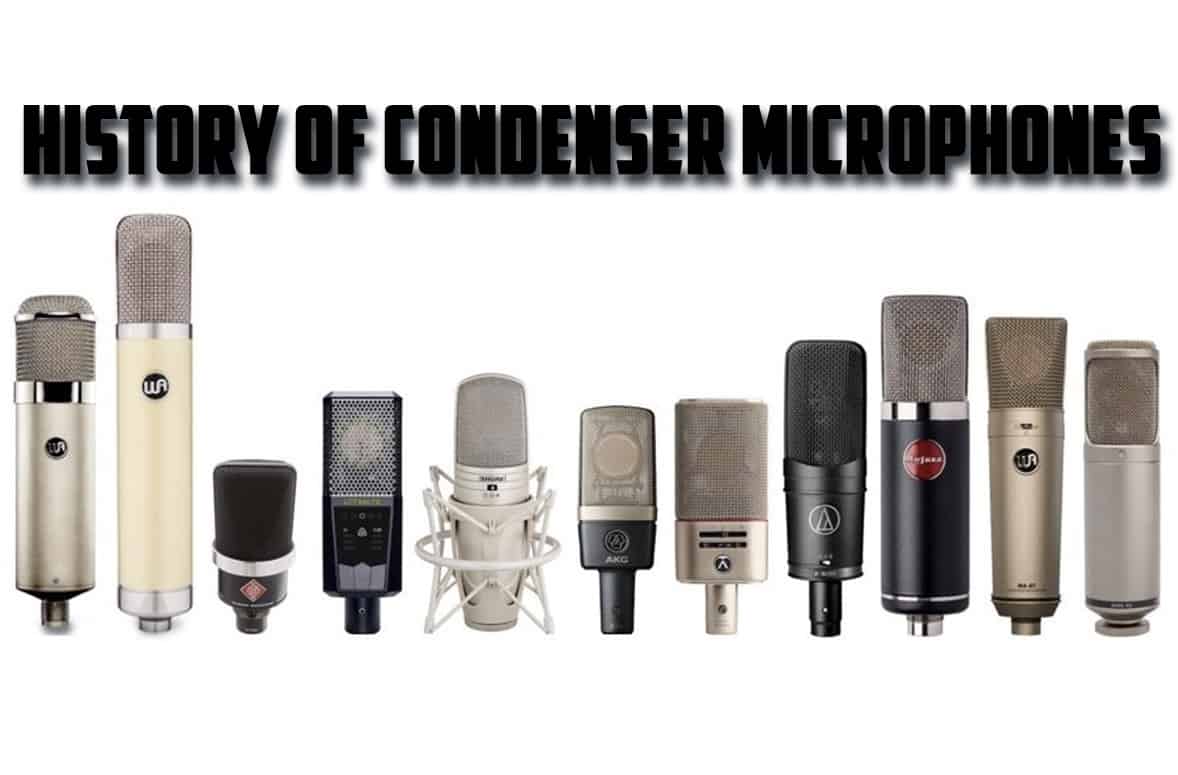
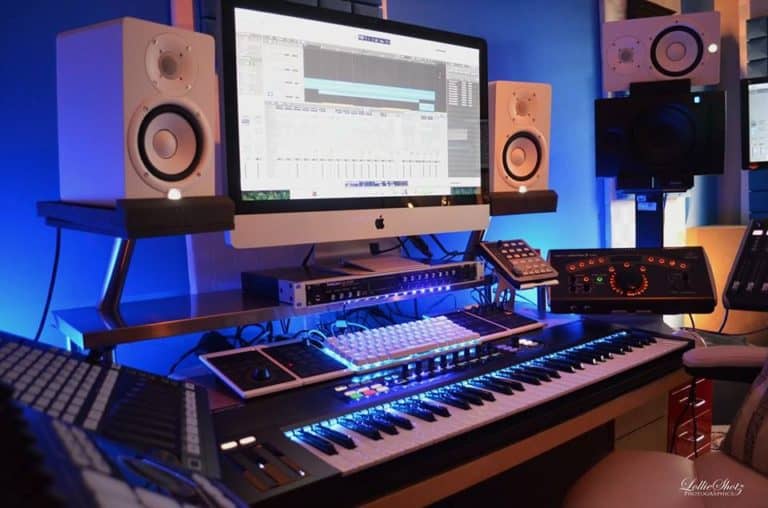

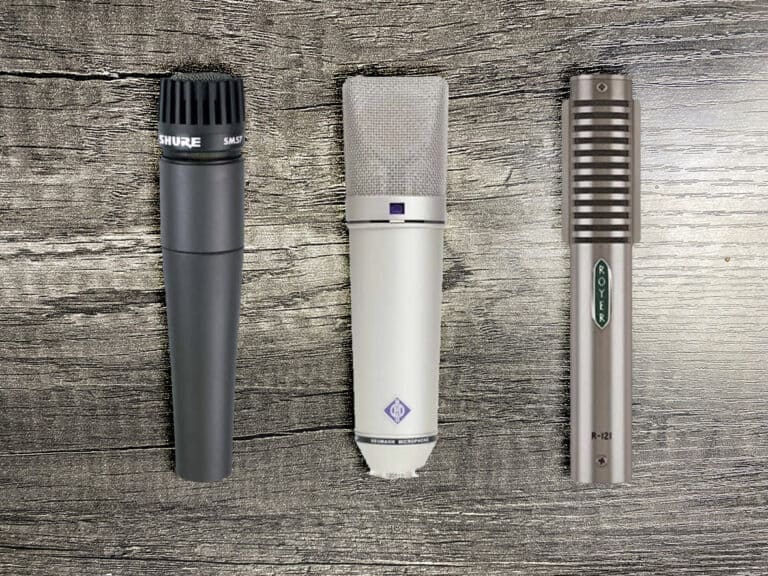
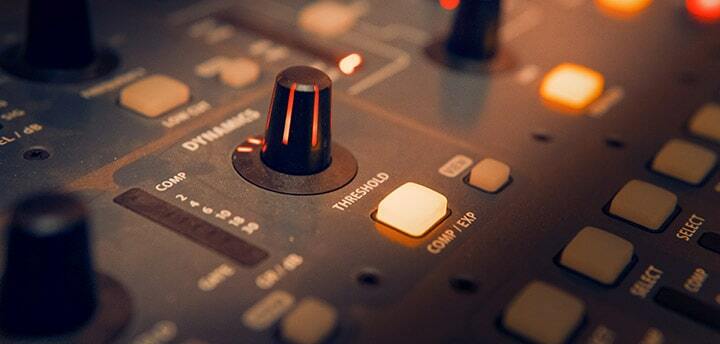

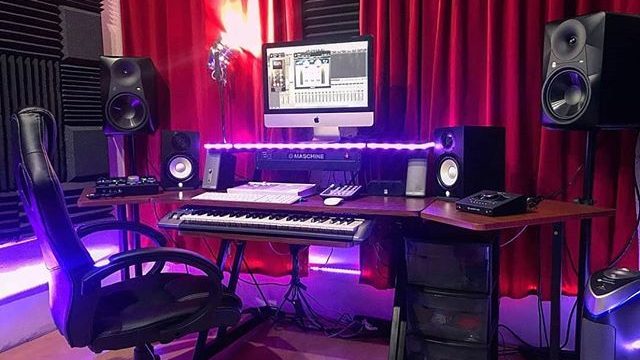
Very nice post. I just stumbled upon your blog and wanted to say that I’ve
truly enjoyed surfing around your blog posts. After all I’ll be subscribing to your rss feed and I hope you write again very soon!
My blog post – how to get more instagram followers (wwd.com)
Thank you! I appreciate you taking the time.
Wow that was odd. I just wrote an incredibly long comment but after I clicked submit my
comment didn’t show up. Grrrr… well I’m not writing all that over again. Anyway, just
wanted to say great blog!
my webpage – best gold ira companies
Lots of people use their lotteries to raise
money for valuable initiatives that improve education, public infrastructure and societal services.
Once you lotto play the lottery, you’re helping
to finance these programs while you finance your own desires of earning
it big. Have a great time and all the best!